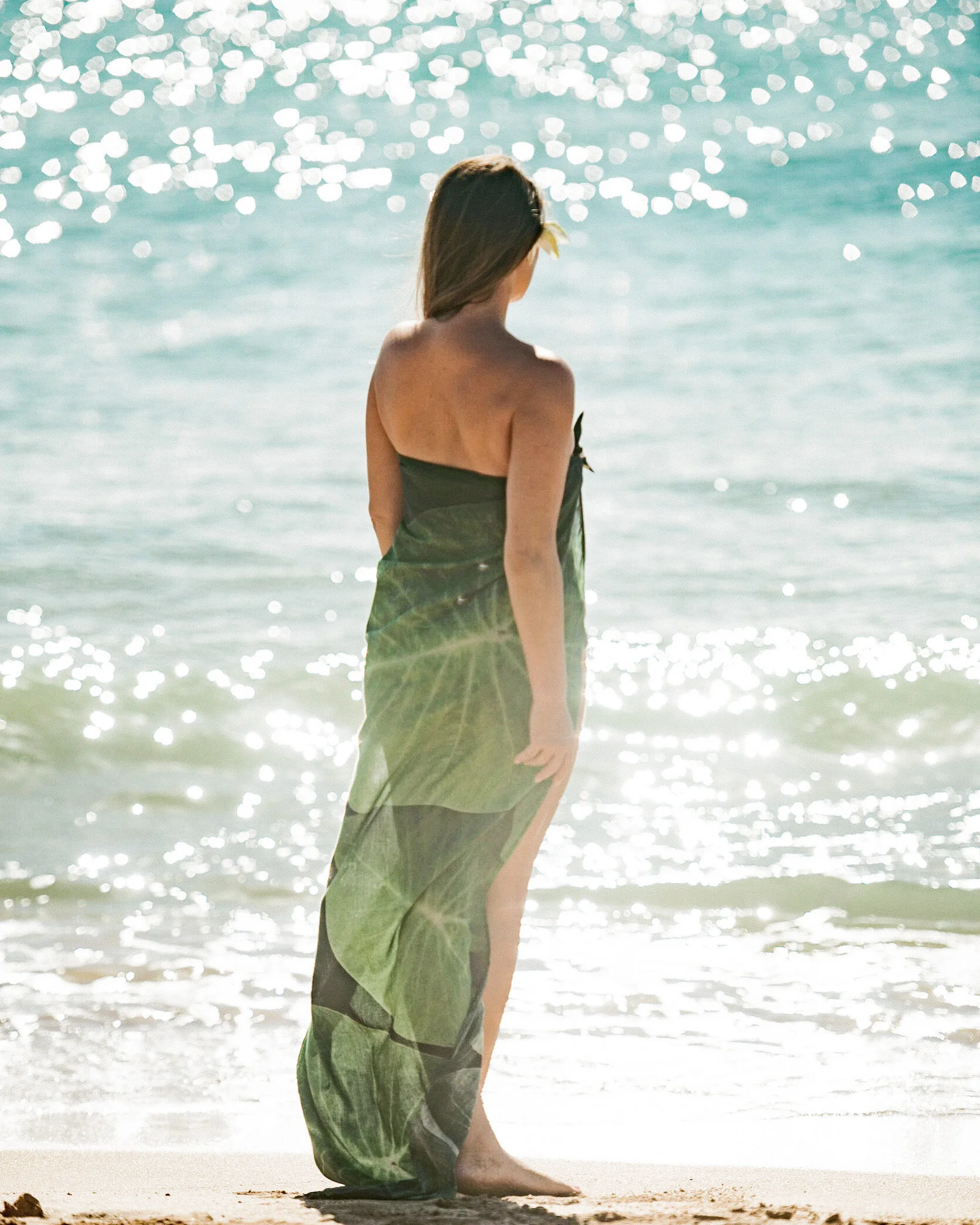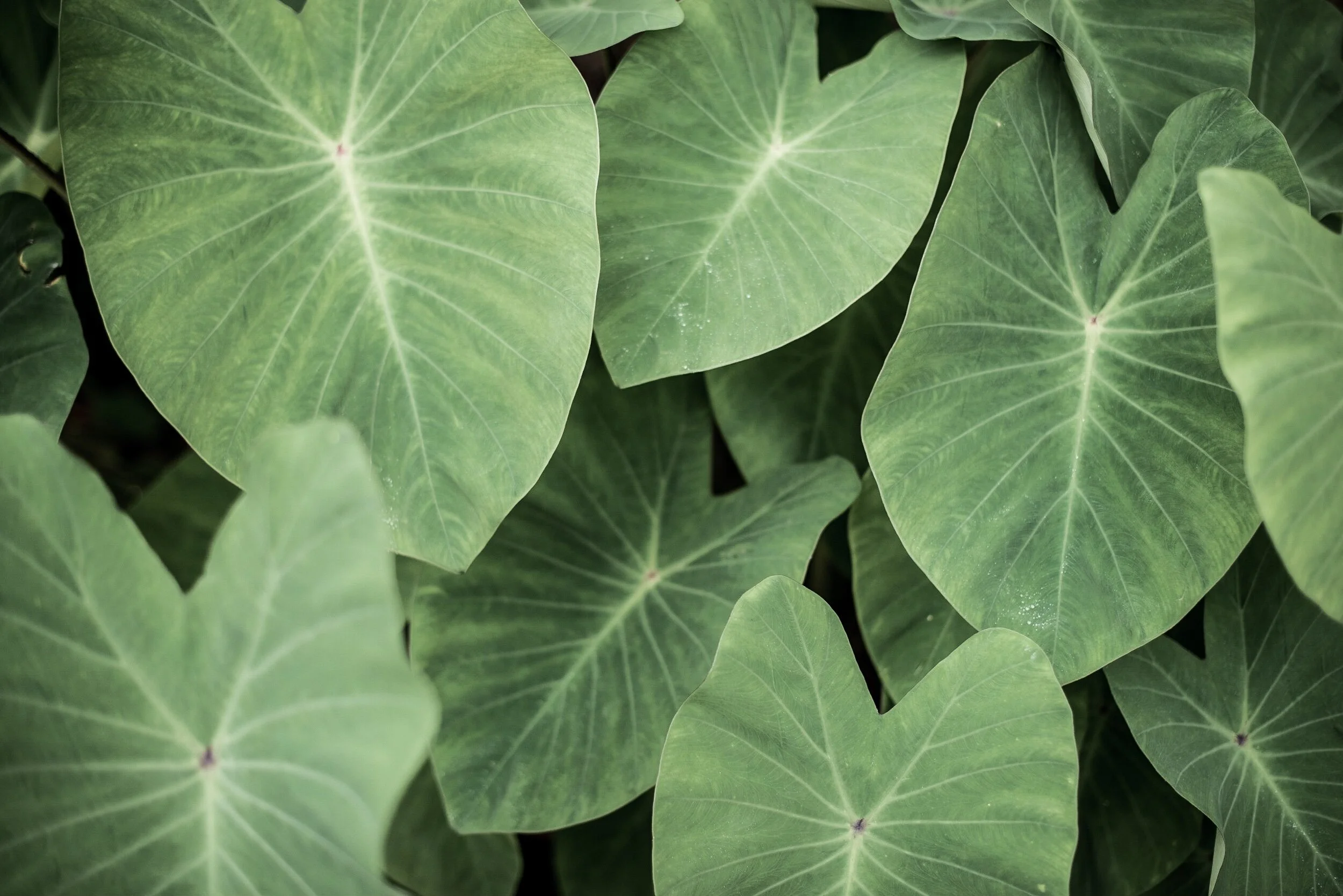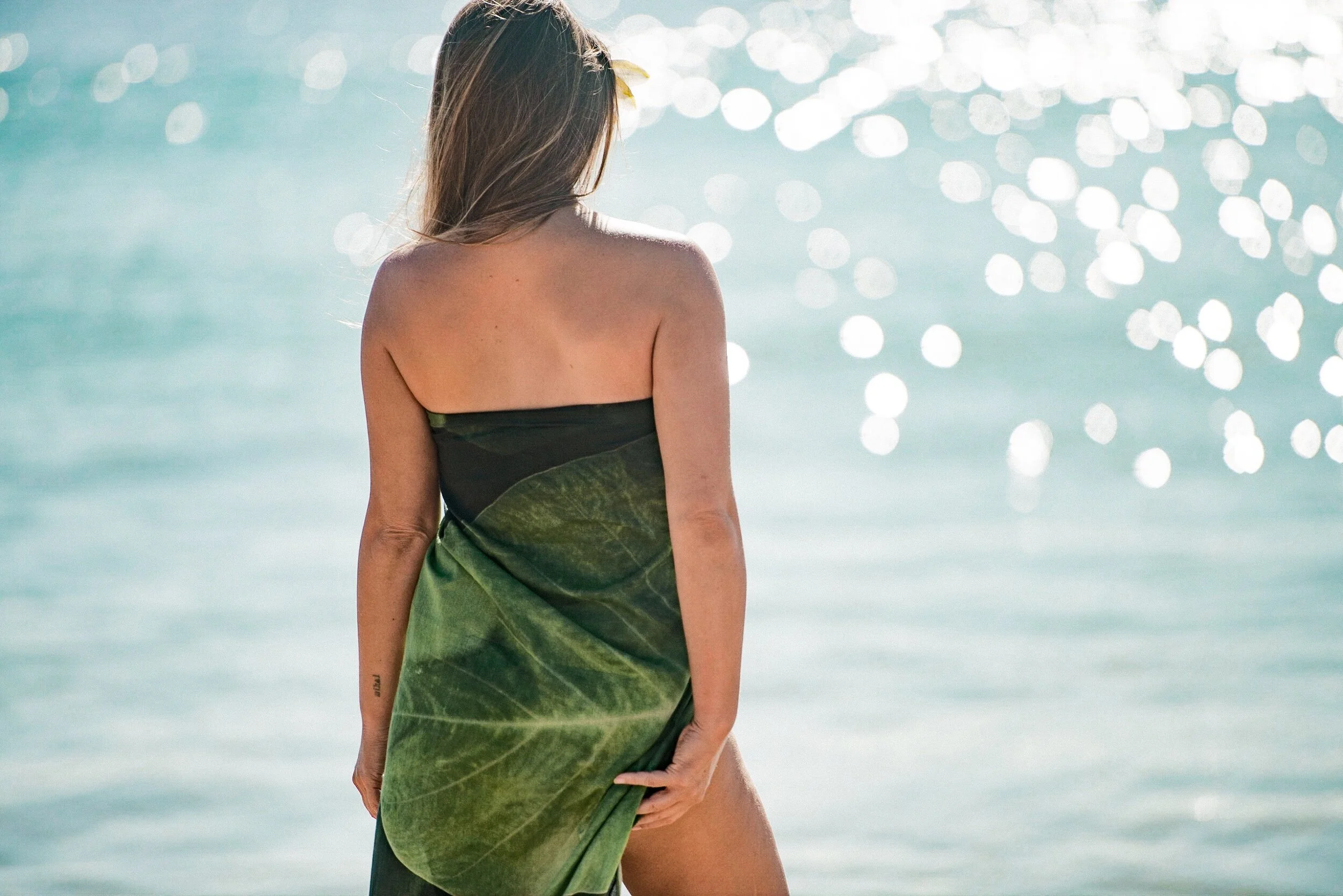Kalo o nā pali pareu
Kalo o nā pali pareu
There are small patches of kalo that grow wild , without the tending of human hands. They cling to the Pali, hanging above the sea, fed by dripping springs & small waterfalls. Theirs is a home shared with koaʻe & iwa. Proudly they cling to the rocks, for hundreds of years, through the salty sea mist of winter’s high surf, the occasional flooding, the sumner heat, and still they thrive. I often wonder how they arrived here, who’s Ohana carefully prepared the huli to be carried- on which waʻa, from which island- on a month-long voyage to be cultivated in a new distant home. Did they originate from Tautira, or Rurutu, or Raʻiatea, or….? They are living testimony to the bravery & ingenuity for our Polynesian people, our kupuna who crossed oceans, & despite harsh conditions, adapted, persevered & thrived.
For my ohana, they are a reminder that we as a people can, & will, continue to do the same.
A soft & sturdy cotton pareu honoring the wild kalo of nā pali






